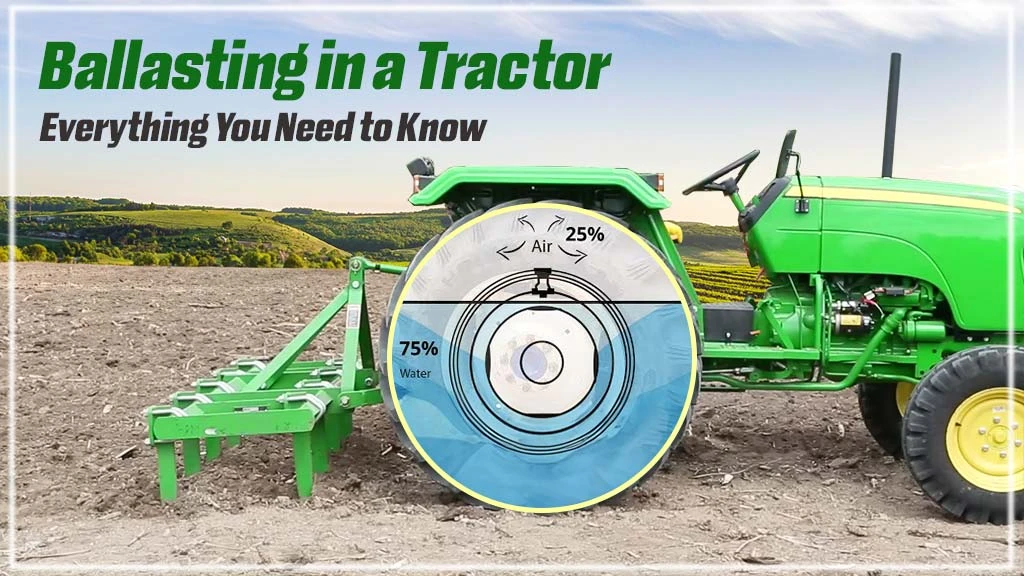Tractor Ballasting: Why It Matters and How to Do It Right

- Shadreck Mwimanzi
- 04 Sep, 2025
Tractor Ballasting:
Why It Matters and How to Do It Right
Tractor ballasting is a crucial practice often overlooked by farmers. It involves adding weight to the tractor to improve traction, stability, and overall performance.
Why is Ballasting Important?
Increased Traction:
Essential for pulling heavy loads like plows, cultivators, and trailers.
Prevents tire slippage, which can damage the soil and reduce efficiency.
Enhanced Stability:
Lowers the tractor's center of gravity.
Reduces the risk of rollovers, especially on slopes or uneven terrain.
Improved Implement Performance:
Ensures consistent depth and even work with implements like plows and cultivators.
Reduced Tire Wear:
Proper weight distribution minimizes tire wear and tear.
Ballasting Methods:
Rear Wheel Weights:
Cast iron or steel weights attached directly to the rear wheels.
Easy to add and remove.
Effective for general-purpose work.
Front Wheel Weights:
Attached to the front axle or mounted on the front of the tractor.
Improves front-end traction and steering stability.
Crucial for front-mounted implements like loaders.
Fluid Ballast:
Filling tractor tires with liquid (water, antifreeze, or special ballast solutions).
Provides smooth weight distribution.
Offers good stability and traction.
Box Ballast:
Placing heavy objects (like sandbags, rocks, or concrete blocks) in boxes or bins attached to the tractor.
Versatile and adaptable to different weight requirements.
Tips for Effective Ballasting:
Match the weight to the task: Use the appropriate amount of weight for the specific job. Too little weight can lead to slippage, while too much can cause excessive wear and tear.
Distribute weight evenly: Ensure proper weight distribution between the front and rear axles.
We tt5 tt5 in 45fg6f 446 Consider the soil conditions: Adjust ballast based on soil type and moisture content.
Maintain proper tire pressure: Maintain the recommended tire pressure for optimal traction and performance.
Safety Considerations:
Always follow the manufacturer's recommendations for ballast types and weights.
Be cautious when operating a ballasted tractor, especially on slopes or uneven terrain.
Inspect all ballast attachments regularly for wear and tear.
By understanding the importance of tractor ballasting and implementing the right techniques, farmers can significantly improve their productivity, efficiency, and safety.
Note: This is a basic draft. You can expand on specific points, add images, and tailor it to your target audience.
I hope this helps! Let me know if you'd like me to elaborate on any specific aspect.
Leave a Reply
Your email address will not be published. Required fields are marked *



.jpg)







.jpeg)

